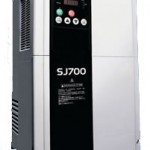Variable Frequency Drives for Pumps
 Variable Frequency Drives are used in applications ranging from small industrial fans to the largest of oil refinery, centrifugal pumps and compressors.About one third of the world’s electrical energy is consumed by electric motors in fixed-speed centrifugal pumps, fan and compressor applications. Variable Frequency Drives worldwide market towards most industrialapplications is still relatively small. The main advantage of variable frequency drives highlight significant energy efficiency improvement for obsolete and older technology via a retrofit with an alternating current electric motor and variable frequency drive installation.
Variable Frequency Drives are used in applications ranging from small industrial fans to the largest of oil refinery, centrifugal pumps and compressors.About one third of the world’s electrical energy is consumed by electric motors in fixed-speed centrifugal pumps, fan and compressor applications. Variable Frequency Drives worldwide market towards most industrialapplications is still relatively small. The main advantage of variable frequency drives highlight significant energy efficiency improvement for obsolete and older technology via a retrofit with an alternating current electric motor and variable frequency drive installation.
Variable frequency drives for pumps use a built-in, solid state controller with apower electronics conversion system consisting of three main systems: a bridge rectifier, a direct current module, and the variable frequency inverter.Most variable frequency drives for pumps use alternating current (AC) power thatconverts the AC power line input as alternating current output. In some pump applications, variable frequency drives are configured as DC-AC drives. Some variable frequency drives for pumps can also be uniquely setup and used for a single phase to three phase converter on electric alternating current (AC) motors.
Operator Interface Control Modules
 Today, most variable frequency drives for pumps include an operator interface which is also known as a keypad operator interface. The keypad operator interface usually includes buttons or touchscreen technology so the operator can adjust the electric motor’s speed (RPM), program speed functions, and start, stop or control the motor from forward to reverse; or reverse to forward. Remote keypads are also available for most variable frequency drives so the operator can control their pump application from a different location other than where the variable frequency drive is located. Variable frequency drives for pumps also include input / output wiring terminals for connecting separate controls that include switches, additional operator interface modules, push buttons, emergency stop buttons, networking access via a personal computer (PC), laptop, and other industry-specific control modules that help conserve the overall lifespan of electric motors while reducing energy costs via power usage.
Today, most variable frequency drives for pumps include an operator interface which is also known as a keypad operator interface. The keypad operator interface usually includes buttons or touchscreen technology so the operator can adjust the electric motor’s speed (RPM), program speed functions, and start, stop or control the motor from forward to reverse; or reverse to forward. Remote keypads are also available for most variable frequency drives so the operator can control their pump application from a different location other than where the variable frequency drive is located. Variable frequency drives for pumps also include input / output wiring terminals for connecting separate controls that include switches, additional operator interface modules, push buttons, emergency stop buttons, networking access via a personal computer (PC), laptop, and other industry-specific control modules that help conserve the overall lifespan of electric motors while reducing energy costs via power usage.
The drive’s operator interface also provides a means to operate and configure the variable frequency drive to accelerate and decelerate the speed of an electric motor in the operator’s desired time frame. Variable Frequency Drives for Pumps are configured to adjust the operating speed (RPM) which helps reduce electric motor failure because most electric motors do not need to operate at full load speed (RPM) to the equipment in which the electric motor is operating.
Variable Frequency Drives for Pumps can also be configured with other operator control functions such as starting an electric motor in either forward or reverse, adjusting the original motor speed with additional process control modules, and programming control via the variable frequency drive parameter setup to start and stop electric motors in several different variations. There are three main types of variable frequency drives that can be used for pumps; The most common type an alternating current (AC) variable frequency drive. Older technology types of variable frequency include direct current (DC) drives and Eddy Current motor drives but most of these products eventually are replaced / retrofitted with an AC electric motor and an AC Variable Frequency Drive.
Information Sources:
http://en.wikipedia.org/wiki/Variable-frequency_drive








